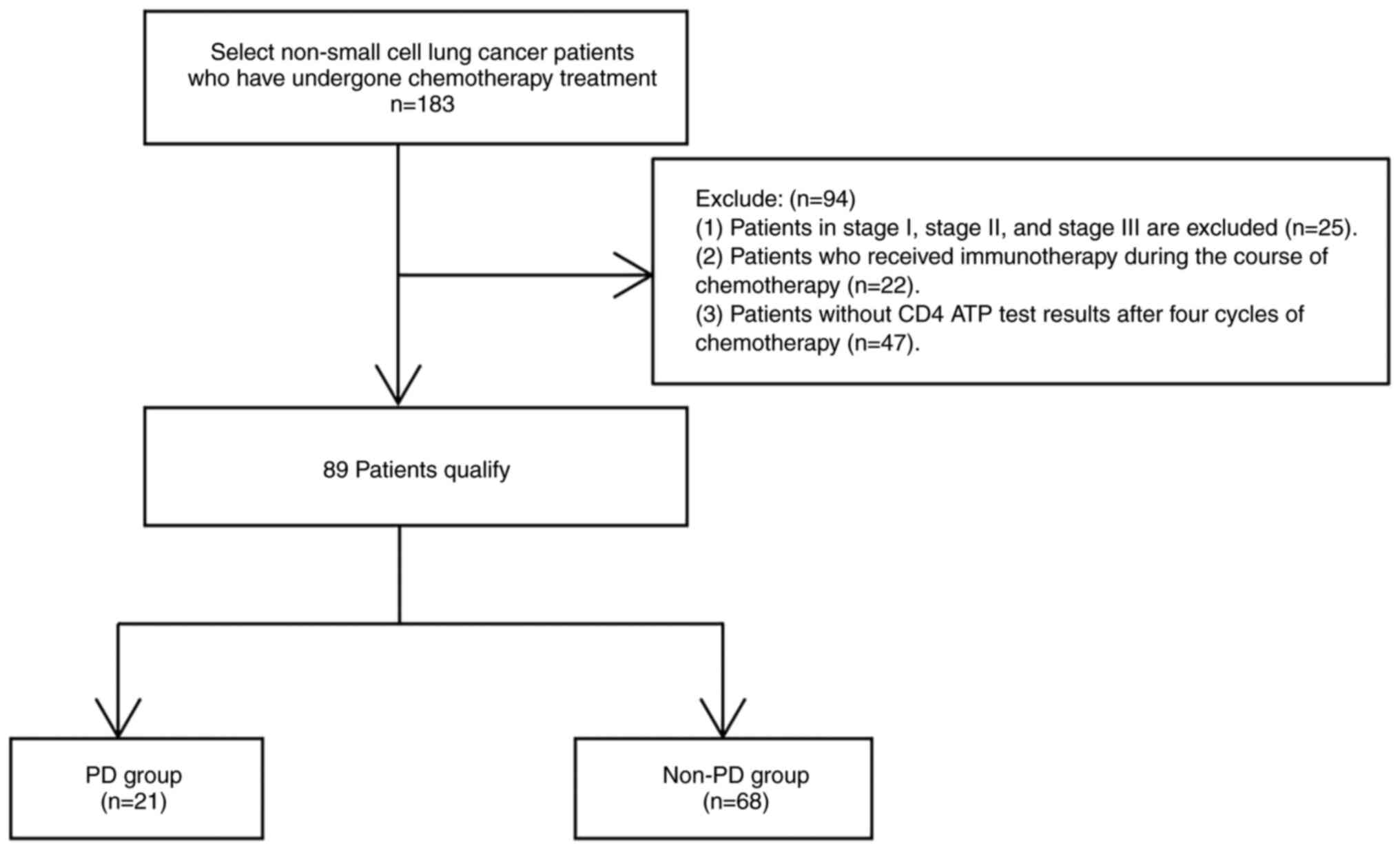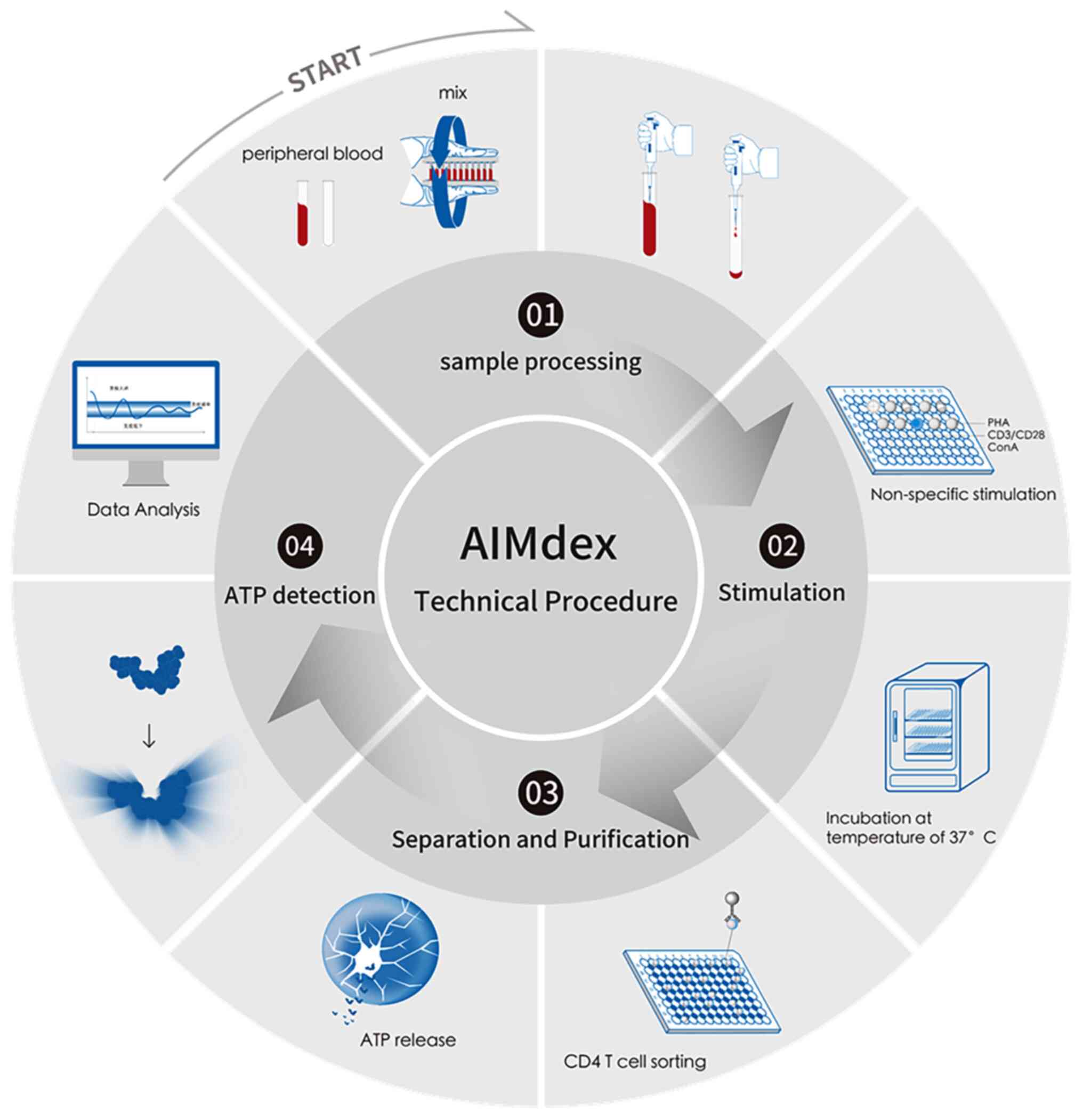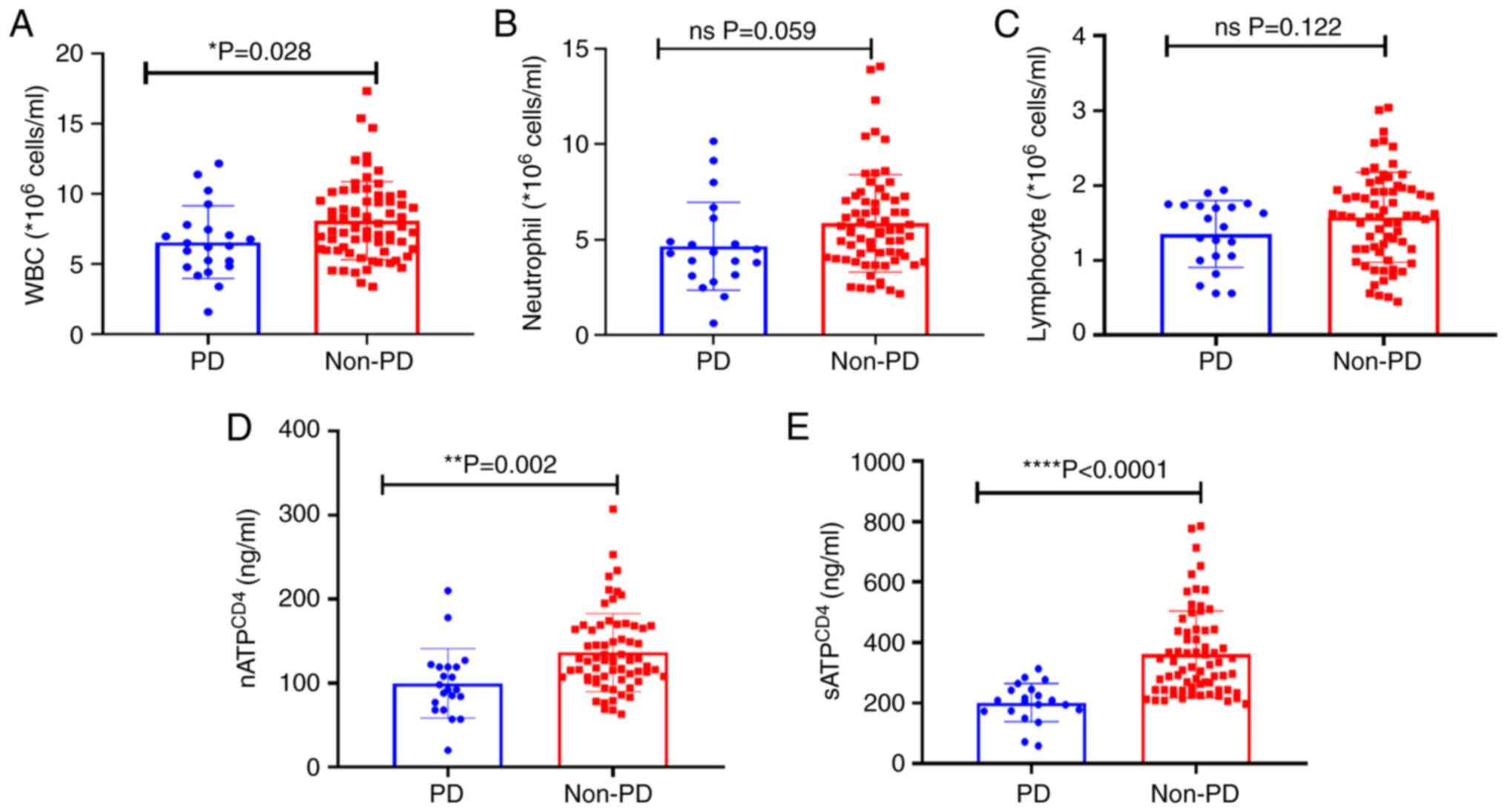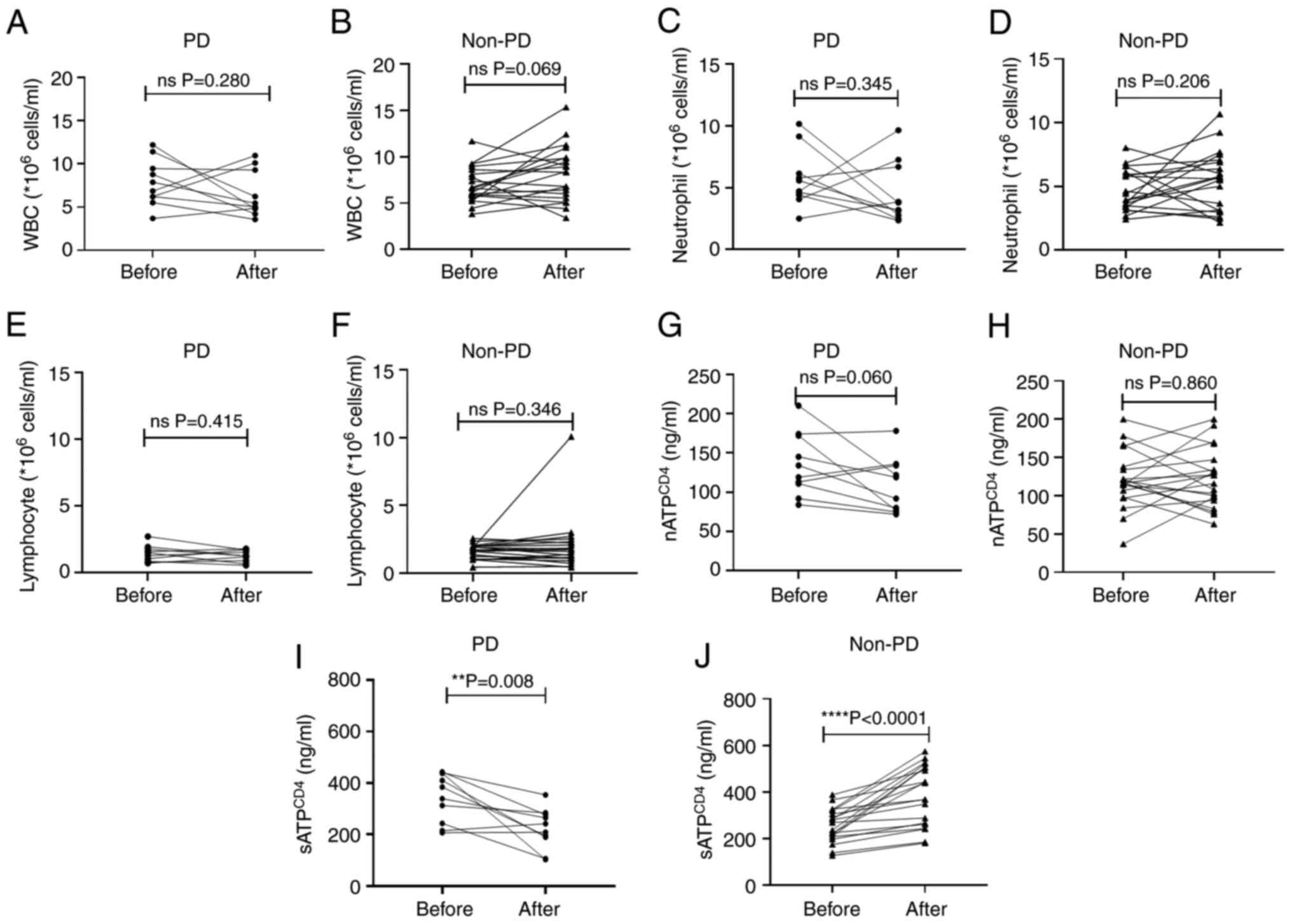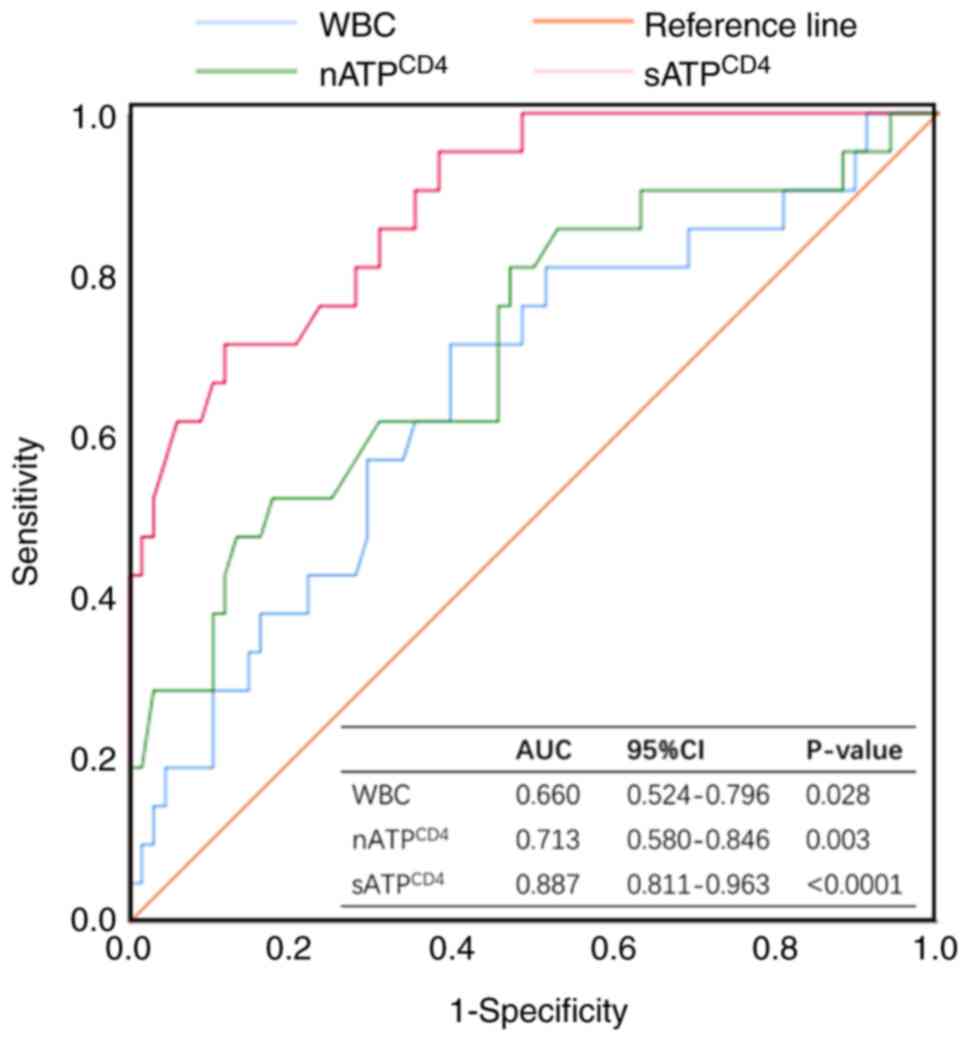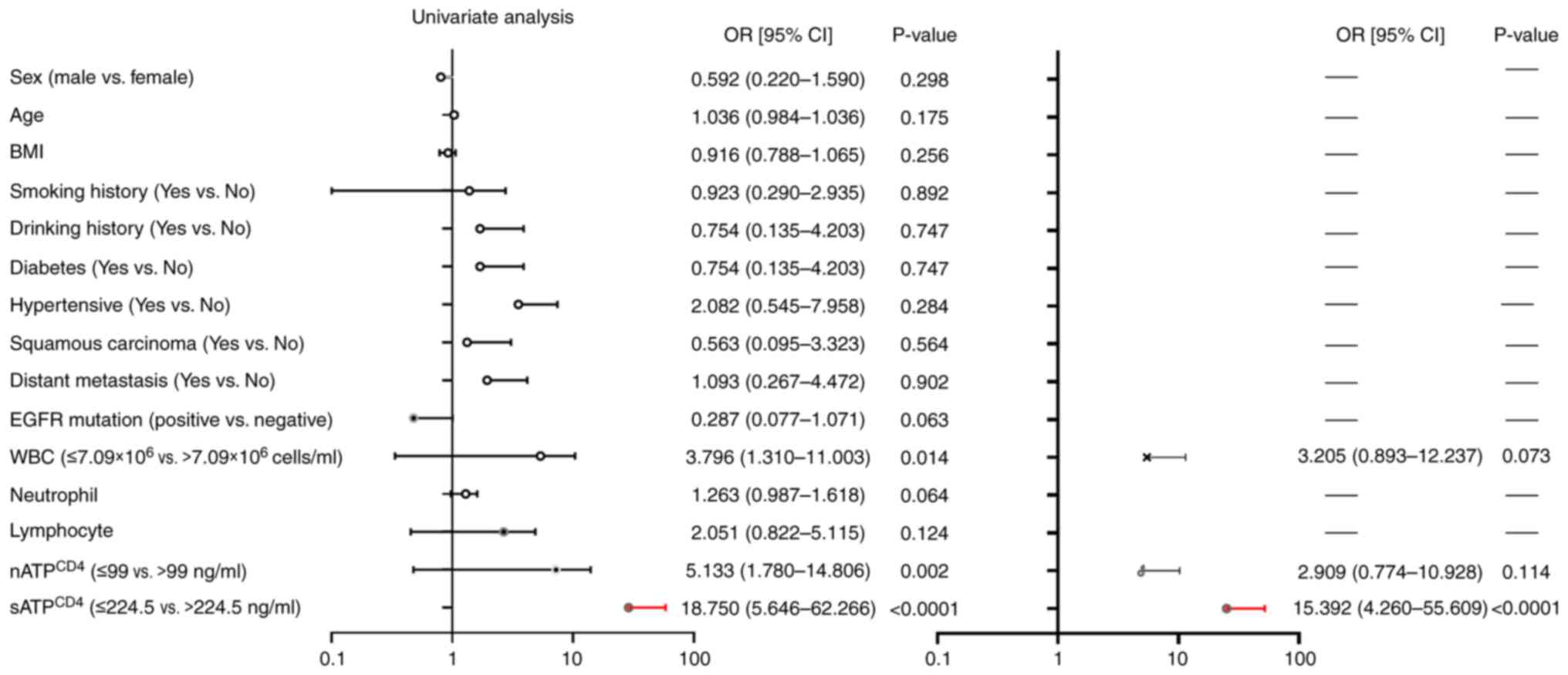|
1
|
Siegel RL, Miller KD, Wagle NS and Jemal
A: Cancer statistics, 2023. CA Cancer J Clin. 73:17–48. 2023.
View Article : Google Scholar : PubMed/NCBI
|
|
2
|
Xia C, Dong X, Li H, Cao M, Sun D, He S,
Yang F, Yan X, Zhang S, Li N and Chen W: Cancer statistics in China
and United States, 2022: Profiles, trends, and determinants. Chin
Med J (Engl). 135:584–590. 2022. View Article : Google Scholar : PubMed/NCBI
|
|
3
|
Chen X, Liu Y, Røe OD, Qian Y, Guo R, Zhu
L, Yin Y and Shu Y: Gefitinib or erlotinib as maintenance therapy
in patients with advanced stage non-small cell lung cancer: A
systematic review. PLoS One. 8:e593142013. View Article : Google Scholar : PubMed/NCBI
|
|
4
|
Li K, Zhang Q, Zhang Y, Yang J and Zheng
J: T-cell-associated cellular immunotherapy for lung cancer. J
Cancer Res Clin Oncol. 141:1249–1258. 2015. View Article : Google Scholar : PubMed/NCBI
|
|
5
|
Carlisle JW, Steuer CE, Owonikoko TK and
Saba NF: An update on the immune landscape in lung and head and
neck cancers. CA Cancer J Clin. 70:505–517. 2020. View Article : Google Scholar : PubMed/NCBI
|
|
6
|
Mazzaschi G, Facchinetti F, Missale G,
Canetti D, Madeddu D, Zecca A, Veneziani M, Gelsomino F, Goldoni M,
Buti S, et al: The circulating pool of functionally competent NK
and CD8+ cells predicts the outcome of anti-PD1 treatment in
advanced NSCLC. Lung Cancer. 127:153–163. 2019. View Article : Google Scholar : PubMed/NCBI
|
|
7
|
Kotsakis A, Koinis F, Katsarou A,
Gioulbasani M, Aggouraki D, Kentepozidis N, Georgoulias V and
Vetsika EK: Prognostic value of circulating regulatory T cell
subsets in untreated non-small cell lung cancer patients. Sci Rep.
6:392472016. View Article : Google Scholar : PubMed/NCBI
|
|
8
|
Yan Y, Wang X, Liu C and Jia J:
Association of lymphocyte subsets with efficacy and prognosis of
immune checkpoint inhibitor therapy in advanced non-small cell lung
carcinoma: A retrospective study. BMC Pulm Med. 22:1662022.
View Article : Google Scholar : PubMed/NCBI
|
|
9
|
Robaire B and Hales BF: Mechanisms of
action of cyclophosphamide as a male-mediated developmental
toxicant. Adv Exp Med Biol. 518:169–180. 2003. View Article : Google Scholar : PubMed/NCBI
|
|
10
|
Vollmer T, Stewart T and Baxter N:
Mitoxantrone and cytotoxic drugs' mechanisms of action. Neurology.
74:S41–S46. 2010. View Article : Google Scholar : PubMed/NCBI
|
|
11
|
Hodge JW, Garnett CT, Farsaci B, Palena C,
Tsang KY, Ferrone S and Gameiro SR: Chemotherapy-induced
immunogenic modulation of tumor cells enhances killing by cytotoxic
T lymphocytes and is distinct from immunogenic cell death. Int J
Cancer. 133:624–636. 2013. View Article : Google Scholar : PubMed/NCBI
|
|
12
|
Locher C, Conforti R, Aymeric L, Ma Y,
Yamazaki T, Rusakiewicz S, Tesniere A, Ghiringhelli F, Apetoh L,
Morel Y, et al: Desirable cell death during anticancer
chemotherapy. Ann N Y Acad Sci. 1209:99–108. 2010. View Article : Google Scholar : PubMed/NCBI
|
|
13
|
Xue F, Gao W, Qin T, Wu C, Luo Y, Chen J,
Zhou T, Feng M, Qiu B, Zhu J, et al: Immune cell function assays in
the diagnosis of infection in pediatric liver transplantation: An
open-labeled, two center prospective cohort study. Transl Pediatr.
10:333–343. 2021. View Article : Google Scholar : PubMed/NCBI
|
|
14
|
Liu W, Wang K, Zhao YH, Song GP, Gao W and
Li DH: Clinical relevance of a CD4+ T cell immune function assay in
the diagnosis of infection in pediatric living-donor liver
transplantation. Exp Ther Med. 18:3823–3828. 2019.PubMed/NCBI
|
|
15
|
Maidman SD, Gidea C, Reyentovich A, Rao S,
Saraon T, Kadosh BS, Narula N, Carillo J, Smith D, Moazami N, et
al: Pre-transplant immune cell function assay as a predictor of
early cardiac allograft rejection. Clin Transplant. 36:e147452022.
View Article : Google Scholar : PubMed/NCBI
|
|
16
|
Serban G, Whittaker V, Fan J, Liu Z, Manga
K, Khan M, Kontogianni K, Padmanabhan A, Cohen D, Suciu-Foca N, et
al: Significance of immune cell function monitoring in renal
transplantation after Thymoglobulin induction therapy. Hum Immunol.
70:882–890. 2009. View Article : Google Scholar : PubMed/NCBI
|
|
17
|
Xian Y, Zhang KX, Bi XG, Zheng CL and Xie
D: Value of adenosine triphosphate in CD4+ T lymphocytes to the
prediction of prognosis of septic patients. Chin Pract Diagn Ther.
37:1216–1221. 2023.(In Chinese).
|
|
18
|
Cheng JW, Shi YH, Fan J, Huang XW, Qiu SJ,
Xiao YS, Wang Z, Dai Z, Tang ZY and Zhou J: An immune function
assay predicts post-transplant recurrence in patients with
hepatocellular carcinoma. J Cancer Res Clin Oncol. 137:1445–1453.
2011. View Article : Google Scholar : PubMed/NCBI
|
|
19
|
Uemura T, Riley TR, Khan A, Hollenbeak C,
Schreibman I, Ghahramani N, Reeves B, Domen RE, Zander DS and Kadry
Z: Immune functional assay for immunosuppressive management in
post-transplant malignancy. Clin Transplant. 25:E32–E37. 2011.
View Article : Google Scholar : PubMed/NCBI
|
|
20
|
Chen DS and Mellman I: Oncology meets
immunology: The cancer-immunity cycle. Immunity. 39:1–10. 2013.
View Article : Google Scholar : PubMed/NCBI
|
|
21
|
Gridelli C, Ardizzoni A, Le Chevalier T,
Manegold C, Perrone F, Thatcher N, Van Zandwijk N, Di Maio M,
Martelli O and De Marinis F: Treatment of advanced non-small-cell
lung cancer patients with ECOG performance status 2: Results of an
European experts panel. Ann Oncol. 15:419–426. 2004. View Article : Google Scholar : PubMed/NCBI
|
|
22
|
Detterbeck FC, Chansky K, Groome P,
Bolejack V, Crowley J, Shemanski L, Kennedy C, Krasnik M, Peake M
and Rami-Porta R: IASLC Staging and Prognostic Factors Committee,
Advisory Boards, and Participating Institutions: The IASLC lung
cancer staging project: Methodology and validation used in the
development of proposals for revision of the stage classification
of NSCLC in the forthcoming (eighth) edition of the TNM
classification of lung cancer. J Thorac Oncol. 11:1433–1446. 2016.
View Article : Google Scholar : PubMed/NCBI
|
|
23
|
Seymour L, Bogaerts J, Perrone A, Ford R,
Schwartz LH, Mandrekar S, Lin NU, Litière S, Dancey J, Chen A, et
al: iRECIST: Guidelines for response criteria for use in trials
testing immunotherapeutics. Lancet Oncol. 18:e143–e152. 2017.
View Article : Google Scholar : PubMed/NCBI
|
|
24
|
Hou K, Ye W, Huang Q, Li W, Tan Z, Tao N,
Yang D, Lin H, Deng Z, Xia Y and Yu G: The predictive value of
peripheral blood CD4 cells ATP concentration for immune-related
adverse events in advanced non-small cell lung cancer patients. BMC
Immunol. 25:32024. View Article : Google Scholar : PubMed/NCBI
|
|
25
|
Wang L, Zhang M, Pan X, Zhao M, Huang L,
Hu X, Wang X, Qiao L, Guo Q, Xu W, et al: Integrative serum
metabolic fingerprints based multi-modal platforms for lung
adenocarcinoma early detection and pulmonary nodule classification.
Adv Sci (Weinh). 9:e22037862022. View Article : Google Scholar : PubMed/NCBI
|
|
26
|
Griesinger F, Korol EE, Kayaniyil S, Varol
N, Ebner T and Goring SM: Efficacy and safety of first-line
carboplatin-versus cisplatin-based chemotherapy for non-small cell
lung cancer: A meta-analysis. Lung Cancer. 135:196–204. 2019.
View Article : Google Scholar : PubMed/NCBI
|
|
27
|
Chalabi M, Cardona A, Nagarkar D, Scala
AD, Gandara D, Rittmeyer A, Albert M, Powles T, Kok M and Herrera
FG; imCORE working group of early career investigators, : Efficacy
of chemotherapy and atezolizumab in patients with non-small-cell
lung cancer receiving antibiotics and proton pump inhibitors:
Pooled post hoc analyses of the OAK and POPLAR trials. Ann Oncol.
31:525–531. 2020. View Article : Google Scholar : PubMed/NCBI
|
|
28
|
Ding Z, Liu Y, Huang Q, Cheng C, Song L,
Zhang C, Cui X, Wang Y, Han Y and Zhang H: m6A-and immune-related
lncRNA signature confers robust predictive power for immune
efficacy in lung squamous cell carcinoma. View. 4:202200832023.
View Article : Google Scholar
|
|
29
|
Hanoteau A, Newton JM, Krupar R, Huang C,
Liu HC, Gaspero A, Gartrell RD, Saenger YM, Hart TD, Santegoets SJ,
et al: Tumor microenvironment modulation enhances immunologic
benefit of chemoradiotherapy. J Immunother Cancer. 7:102019.
View Article : Google Scholar : PubMed/NCBI
|
|
30
|
Xu L, Zou C, Zhang S, Chu TSM, Zhang Y,
Chen W, Zhao C, Yang L, Xu Z, Dong S, et al: Reshaping the systemic
tumor immune environment (STIE) and tumor immune microenvironment
(TIME) to enhance immunotherapy efficacy in solid tumors. J Hematol
Oncol. 15:872022. View Article : Google Scholar : PubMed/NCBI
|
|
31
|
Salem ML, Atia I and Elmashad NM: Higher
cytotoxic activities of CD8+ T cells and natural killer cells from
peripheral blood of early diagnosed lung cancer patients. BMC
Immunology. 24:242023. View Article : Google Scholar : PubMed/NCBI
|
|
32
|
Kang DH, Choi SW, Sun P, Chung C, Park D,
Lee SI, Koh JS, Kim Y and Lee JE: The rest period between
chemotherapy and immunotherapy influences the efficacy of immune
checkpoint inhibitors in lung cancer. Thoracic Cancer.
13:2346–2354. 2022. View Article : Google Scholar : PubMed/NCBI
|
|
33
|
Bonora M, Patergnani S, Rimessi A, De
Marchi E, Suski JM, Bononi A, Giorgi C, Marchi S, Missiroli S,
Poletti F, et al: ATP synthesis and storage. Purinergic Signal.
8:343–357. 2012. View Article : Google Scholar : PubMed/NCBI
|
|
34
|
Kowalski R, Post D, Schneider MC, Britz J,
Thomas J, Deierhoi M, Lobashevsky A, Redfield R, Schweitzer E,
Heredia A, et al: Immune cell function testing: An adjunct to
therapeutic drug monitoring in transplant patient management. Clin
Transplant. 17:77–88. 2003. View Article : Google Scholar : PubMed/NCBI
|
|
35
|
Rodrigo E, López-Hoyos M, Corral M,
Fábrega E, Fernández-Fresnedo G, Segundo DS, Piñera C and Arias M:
ImmuKnow as a diagnostic tool for predicting infection and acute
rejection in adult liver transplant recipients: A systematic review
and meta-analysis. Liver Transpl. 18:1244–1252. 2012. View Article : Google Scholar
|
|
36
|
Lawrence KL, White PH, Morris GP,
Jennemann J, Phelan DL, Hotchkiss RS and Kollef MH: CD4+ lymphocyte
adenosine triphosphate determination in sepsis: A cohort study.
Crit Care. 14:R1102010. View
Article : Google Scholar : PubMed/NCBI
|
|
37
|
Kagamu H, Kitano S, Yamaguchi O, Yoshimura
K, Horimoto K, Kitazawa M, Fukui K, Shiono A, Mouri A, Nishihara F,
et al: CD4+ T-cell immunity in the peripheral blood
correlates with response to anti-PD-1 therapy. Cancer Immunol Res.
8:334–344. 2020. View Article : Google Scholar : PubMed/NCBI
|
|
38
|
Xue F, Zhang J, Han L, Li Q, Xu N, Zhou T,
Xi Z, Wu Y and Xia Q: Immune cell functional assay in monitoring of
adult liver transplantation recipients with infection.
Transplantation. 89:620–626. 2010. View Article : Google Scholar : PubMed/NCBI
|
|
39
|
Sun B and Zhang Y: Overview of
orchestration of CD4+ T cell subsets in immune responses. Adv Exp
Med Biol. 84:1–13. 2014. View Article : Google Scholar : PubMed/NCBI
|
|
40
|
Vonderheide RH and Bayne LJ: Inflammatory
networks and immune surveillance of pancreatic carcinoma. Curr Opin
Immunol. 25:200–205. 2013. View Article : Google Scholar : PubMed/NCBI
|
|
41
|
Zhang BB, Zhu W, Tao J, Li Y, Du CC, Chen
YX and Liu YD: Short-term efficacy of different first-line
chemotherapy regimens for advanced non-small cell lung cancer: A
network meta-analysis. Clin Trans Sci. 13:589–598. 2020. View Article : Google Scholar
|
|
42
|
Xu J, Xiong Y, Xu Z, Xing H, Zhou L and
Zhang X: From targeted therapy to a novel way: Immunogenic cell
death in lung cancer. Front Med (Lausanne). 9:11025502022.
View Article : Google Scholar : PubMed/NCBI
|
|
43
|
Hamarsheh SA, Groß O, Brummer T and Zeiser
R: Immune modulatory effects of oncogenic KRAS in cancer. Nat
Commun. 11:54392020. View Article : Google Scholar : PubMed/NCBI
|
|
44
|
Ravaioli M, Neri F, Lazzarotto T, Bertuzzo
VR, Di Gioia P, Stacchini G, Morelli MC, Ercolani G, Cescon M,
Chiereghin A, et al: Immunosuppression modifications based on an
immune response assay: Results of a randomized, controlled trial.
Transplantation. 99:1625–1632. 2015. View Article : Google Scholar : PubMed/NCBI
|
|
45
|
Petroni G, Buqué A, Zitvogel L, Kroemer G
and Galluzzi L: Immunomodulation by targeted anticancer agents.
Cancer Cell. 39:310–345. 2021. View Article : Google Scholar : PubMed/NCBI
|
|
46
|
Kelly B and O'Neill LA: Metabolic
reprogramming in macrophages and dendritic cells in innate
immunity. Cell Res. 25:771–784. 2015. View Article : Google Scholar : PubMed/NCBI
|
|
47
|
Zhang Y, Fang W, Yan Y, Wang M, Kang S,
Sheng J, Zhan J, Chen N, Hong S, Yang Y, et al: The efficacy of
first-line chemotherapy is associated with KRAS mutation status in
patients with advanced non-small cell lung cancer: A meta-analysis.
Med Oncol. 32:612015. View Article : Google Scholar : PubMed/NCBI
|
|
48
|
Dy GK, Govindan R, Velcheti V, Falchook
GS, Italiano A, Wolf J, Sacher AG, Takahashi T, Ramalingam SS,
Dooms C, et al: Long-term outcomes and molecular correlates of
sotorasib efficacy in patients with pretreated KRAS G12C-mutated
non-small-cell lung cancer: 2-year analysis of CodeBreaK 100. J
Clin Oncol. 41:3311–3317. 2023. View Article : Google Scholar : PubMed/NCBI
|



